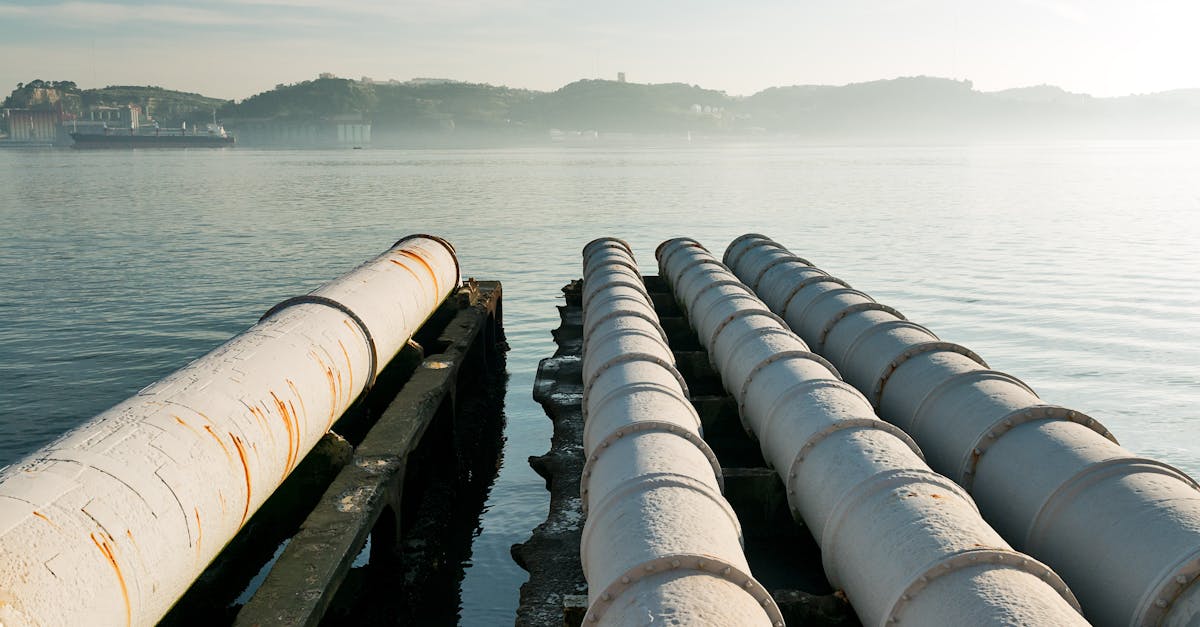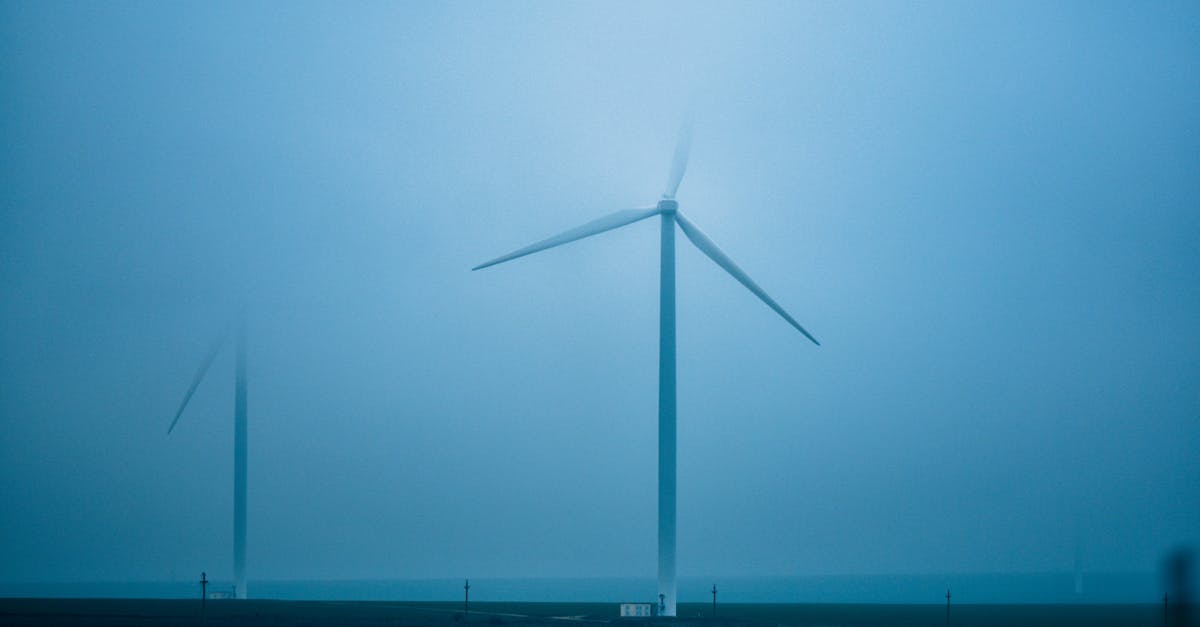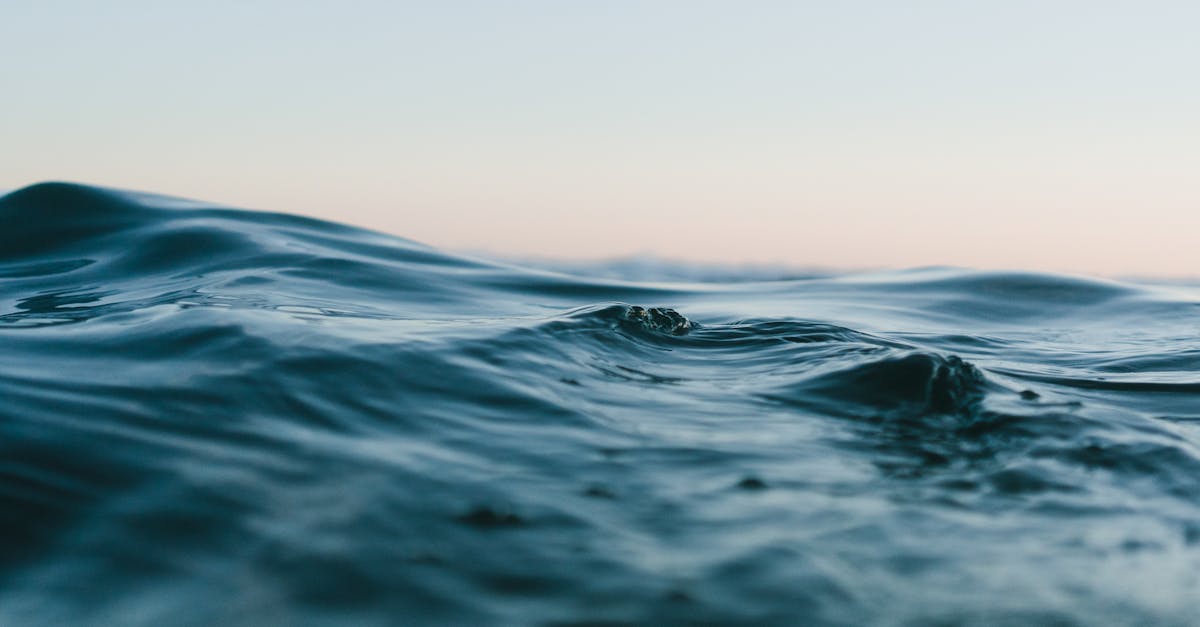A Comprehensive Guide to Water Conservation in Your Home

In the face of increasing global water scarcity, conserving water has become imperative. Every drop we save contributes to the preservation of this precious resource. Mastering water conservation at home is a crucial step towards sustainable living, benefiting both the environment and our wallets. This article unveils 10 expert tips to help you slash your water consumption and make a meaningful difference.
Understanding the importance of water conservation is the cornerstone of sustainable water management. Water scarcity affects countless communities, ecosystems, and industries globally. By reducing our water footprint, we not only secure our own access to clean water but also support the well-being of future generations. Moreover, conserving water can significantly reduce energy consumption associated with water pumping and treatment, minimizing our carbon footprint.
Thank you for reading this post, don't forget to subscribe!
Implementing water-saving practices at home is not merely an act of frugality but a proactive measure to safeguard our planet’s water resources. Join us as we explore these expert tips, empowering you to become a water conservation champion in your household.
1. Why Water Conservation Matters
Water conservation is a crucial environmental practice that involves using water efficiently to minimize waste and protect water resources. It plays a vital role in ensuring the sustainability of our planet and the well-being of future generations.
The environmental impacts of water conservation are far-reaching. Firstly, it helps preserve freshwater ecosystems, which are essential for biodiversity and provide crucial services such as water purification and flood control. Secondly, water conservation reduces the strain on water resources, helping to prevent depletion and salinization of aquifers and other water bodies. By using water wisely, we can maintain the delicate balance of these ecosystems and safeguard their ability to support life.
The benefits of reducing water consumption extend beyond environmental protection. Water conservation can lead to significant economic savings for individuals and communities. By implementing water-efficient practices, households can lower their utility bills and reduce the financial burden associated with water consumption. Additionally, water conservation can create jobs and stimulate innovation in the water sector, leading to the development of new technologies and approaches to water management.
2. 10 Expert Tips to Save Water at Home

To effectively conserve water at home, it’s essential to implement a range of practical measures. Here are 10 expert tips to guide you:
- Fix leaky faucets and toilets: Even a small leak can waste thousands of gallons of water per year. Check your faucets and toilets regularly for leaks and repair them promptly.
- Upgrade to water-efficient appliances: Look for appliances with the WaterSense label, which indicates that they meet EPA criteria for water efficiency. Water-efficient washing machines, dishwashers, and showerheads can significantly reduce your water consumption.
- Implement water-saving landscaping practices: Choose drought-tolerant plants for your yard, and use mulch to retain soil moisture. Consider installing a drip irrigation system to deliver water directly to plant roots, minimizing evaporation and runoff.
- Take shorter showers and baths: Showers account for a large portion of household water use. Reduce your shower time and take shorter baths to conserve water.
- Check for hidden water leaks: Hidden leaks can waste a substantial amount of water. Check your water meter regularly for any unusual increases in water usage. You can also use a leak detection tablet or dye to identify hidden leaks in toilets and faucets.
- Use a bucket to collect rainwater: Collect rainwater from downspouts and use it to water plants, wash your car, or clean outdoor areas. Rainwater harvesting is a simple and effective way to conserve water.
- Water your lawn wisely: Water your lawn only when necessary, and water deeply but less frequently to encourage deep root growth. Use a rain sensor or smart irrigation system to adjust watering schedules based on rainfall.
- Use a low-flow toilet: Low-flow toilets use less water per flush, saving you money and conserving water. Consider installing a dual-flush toilet, which provides two flush options for different waste volumes.
- Educate family and guests: Encourage your family and guests to conserve water by sharing these tips and leading by example. Post reminders or install water-saving devices in common areas to promote water consciousness.
- Monitor your water usage: Track your water consumption by regularly reading your water meter or using online tools provided by your water utility. This will help you identify areas where you can further reduce your water use.
3. Tip 1: Fix Leaky Faucets and Toilets
Leaky faucets and toilets are common household problems that can waste thousands of gallons of water per year. Fixing these leaks is a simple and effective way to conserve water and save money on your water bill.
To fix a leaky faucet, you will need a few basic tools, such as a wrench, a screwdriver, and a replacement washer. First, turn off the water supply to the faucet. Then, use the wrench to loosen the packing nut, which is located just below the handle. Replace the old washer with a new one, and then tighten the packing nut. Finally, turn the water supply back on and check for leaks.
Fixing a leaky toilet is also a relatively simple task. First, check to see if the flapper valve is the source of the leak. The flapper valve is a rubber seal that sits at the bottom of the toilet tank and prevents water from leaking into the bowl. If the flapper valve is worn or damaged, it can cause a leak. To replace the flapper valve, simply unhook the old one and install the new one. You may also need to adjust the water level in the tank, which can be done by adjusting the fill valve.
If you are not comfortable fixing leaky fixtures yourself, you can call a plumber for assistance. However, fixing leaks is a relatively simple and inexpensive task that can save you a lot of water and money in the long run.
4. Tip 2: Upgrade to Water-Efficient Appliances

Upgrading to water-efficient appliances is a smart investment that can save you money on your water bill and help conserve water. Look for appliances with the WaterSense label, which indicates that they meet EPA criteria for water efficiency.
Water-efficient showerheads can reduce your water usage by up to 50%. Low-flow showerheads use less water per minute, but they still provide a satisfying shower experience. You can also install a low-flow aerator on your bathroom sink faucet to reduce water flow without sacrificing performance.
Water-efficient washing machines use less water and energy to clean your clothes. Look for washing machines with a Water Factor of 4 or less. The Water Factor is a measure of how much water a washing machine uses per cubic foot of laundry. You can also save water by washing only full loads of laundry and using the correct water level setting for the size of the load.
Here are some links to relevant product recommendations:
Upgrading to water-efficient appliances is a simple and effective way to conserve water and save money. Make the switch today and start enjoying the benefits!
5. Tip 3: Implement Water-Saving Landscaping Practices
Implementing water-saving landscaping practices can help you conserve water and create a beautiful, sustainable outdoor space. Here are a few tips to get you started:
- Use native plants: Native plants are adapted to the local climate and soil conditions, so they require less water and maintenance than non-native plants. When choosing plants for your landscape, opt for species that are native to your region.
- Mulch around plants: Mulch helps to retain soil moisture, reduce evaporation, and suppress weeds. Spread a layer of mulch around your plants, but be sure to keep it a few inches away from the stems to prevent rot.
- Install a drip irrigation system: Drip irrigation systems deliver water directly to the roots of plants, minimizing evaporation and water waste. Drip irrigation systems are especially beneficial in areas with limited water resources.
Here are a few examples of drought-tolerant plants that are easy to care for:
- Yarrow: Yarrow is a low-maintenance plant that produces clusters of yellow flowers in the summer. It is tolerant of drought, heat, and poor soil conditions.
- Salvia: Salvia is a genus of flowering plants that includes many drought-tolerant species. Salvia plants produce spikes of colorful flowers that attract pollinators.
- Sedum: Sedum is a succulent plant that is known for its fleshy leaves and showy flowers. Sedum plants are very drought-tolerant and can even store water in their leaves.
- Zinnia: Zinnias are a popular choice for summer gardens. They are drought-tolerant and produce a profusion of brightly colored flowers.
By implementing these water-saving landscaping practices, you can create a beautiful and sustainable outdoor space that requires less water.
6. Tip 4: Take Shorter Showers and Bathes
Showers and baths account for a significant portion of household water use. By taking shorter showers and baths, you can save a lot of water. Here are a few tips to help you reduce your shower and bath time:
- Use a shower timer: A shower timer is a simple device that helps you track how long you spend in the shower. Set the timer for 5-10 minutes and see how quickly you can finish your shower. You may be surprised at how much time you can save.
- Take shorter baths: If you prefer taking baths, try to limit your bath time to 10-15 minutes. You can also save water by soaking in the bathtub less frequently.
- Make showers more enjoyable: If you find it difficult to take shorter showers, try making them more enjoyable. Play your favorite music, light some candles, or use a showerhead with different spray settings.
Here are some additional tips for saving water in the shower:
- Turn off the water while you soap up or shampoo your hair.
- Don’t let the water run while you brush your teeth.
- Install a low-flow showerhead.
By following these tips, you can take shorter showers and baths without sacrificing your comfort or hygiene.
7. Tip 5: Check for Hidden Water Leaks
Hidden water leaks can waste thousands of gallons of water per year and can be difficult to detect. Here are a few tips to help you identify and resolve hidden water leaks:
- Check your water meter: One way to check for hidden water leaks is to monitor your water meter. Take a reading of your water meter before you go to bed at night. Then, take another reading in the morning before you use any water. If the water meter reading has increased, you may have a hidden water leak.
- Use leak detection tablets: Leak detection tablets are available at most hardware stores. These tablets can be placed in your toilet tank or other water fixtures to help you identify leaks. If the tablet changes color, it indicates that there is a leak.
- Inspect pipes regularly: Inspect your pipes regularly for any signs of leaks, such as dripping water, corrosion, or mold. If you find any leaks, repair them immediately.
Here are some additional tips for checking for hidden water leaks:
- Listen for the sound of running water: If you hear the sound of running water when all of your faucets and appliances are turned off, you may have a hidden water leak.
- Check your water bill: If your water bill has suddenly increased, it could be a sign of a hidden water leak.
- Contact a plumber: If you are unable to find or fix a hidden water leak, contact a plumber for assistance.
By following these tips, you can identify and resolve hidden water leaks, saving you money and water.
8. Tip 6: Use a Bucket to Collect Rainwater
Collecting rainwater is a great way to conserve water and reduce your reliance on municipal water supplies. Rainwater can be used for a variety of outdoor purposes, such as watering plants, washing cars, and cleaning outdoor surfaces. Here are a few tips on how to set up a rainwater harvesting system:
- Choose a suitable location: Choose a location for your rainwater harvesting system that is close to a downspout and has good drainage. You will also need to make sure that the location is not shaded by trees or other structures.
- Install a rain barrel: Rain barrels are available at most hardware stores. Choose a rain barrel that is the right size for your needs. A good rule of thumb is to choose a rain barrel that can hold at least 50 gallons of water for every 1,000 square feet of roof area.
- Connect the rain barrel to the downspout: Use a downspout diverter to connect the rain barrel to the downspout. The downspout diverter will direct rainwater into the rain barrel. You may also need to install a screen or filter over the downspout diverter to prevent debris from entering the rain barrel.
- Use the rainwater: Rainwater can be used for a variety of outdoor purposes, such as watering plants, washing cars, and cleaning outdoor surfaces. You can also use rainwater to flush toilets and wash clothes.
Here are some of the advantages of using a rainwater harvesting system:
- Rainwater is free: Rainwater is a free resource, so you can save money on your water bill by using rainwater for outdoor purposes.
- Rainwater is good for plants: Rainwater is naturally soft and free of chemicals, so it is good for plants. Rainwater also helps to reduce soil erosion.
- Rainwater harvesting is environmentally friendly: Rainwater harvesting helps to reduce stormwater runoff, which can pollute rivers and streams.
By following these tips, you can set up a rainwater harvesting system and start enjoying the benefits of using rainwater.
9. Tip 7: Water Your Lawn Wisely
Watering your lawn wisely is essential for maintaining a healthy lawn while conserving water. Here are a few guidelines to help you water your lawn efficiently:
- Water deeply and infrequently: Deep watering encourages roots to grow deep into the soil, which makes them more drought-tolerant. Water your lawn for 20-30 minutes, once or twice a week, rather than for shorter periods more frequently.
- Water in the morning: Watering your lawn in the morning allows the water to soak into the soil before it evaporates. Watering in the evening can lead to fungal diseases.
- Use a rain sensor: A rain sensor can help you avoid overwatering your lawn. Rain sensors attach to your sprinkler system and automatically turn off the sprinklers when it rains.
- Install a smart irrigation system: Smart irrigation systems use sensors to monitor soil moisture levels and adjust watering schedules accordingly. Smart irrigation systems can help you save even more water than traditional sprinkler systems.
Here are some additional tips for watering your lawn wisely:
- Choose the right grass type: Choose a grass type that is well-suited to your climate and soil conditions. Some grass types, such as fescue and bluegrass, are more drought-tolerant than others.
- Mow your lawn at the correct height: Mowing your lawn at the correct height helps to reduce water loss. Taller grass blades help to shade the soil and reduce evaporation.
- Aerate your lawn regularly: Aerating your lawn helps to improve drainage and allows water to penetrate the soil more easily.
By following these tips, you can water your lawn wisely and maintain a healthy, beautiful lawn while conserving water.
10. Tip 8: Use a Low-Flow Toilet
Low-flow toilets are an effective way to save water in your home. Low-flow toilets use less water per flush than traditional toilets, without sacrificing performance. Here are a few advantages of using a low-flow toilet:
- Water savings: Low-flow toilets can save you up to 30 gallons of water per day, compared to traditional toilets. This can add up to significant water savings over time.
- Lower water bills: Saving water also means saving money on your water bill.
- Environmental benefits: Reducing water consumption helps to conserve water resources and protect the environment.
Low-flow toilets use a variety of water-saving mechanisms to achieve their high efficiency. These mechanisms include:
- Dual-flush toilets: Dual-flush toilets have two buttons, one for a full flush and one for a half flush. Half flushes use less water than full flushes, making them ideal for liquid waste.
- Pressure-assist toilets: Pressure-assist toilets use compressed air to assist in the flushing process, which allows them to use less water than traditional toilets.
- Gravity-feed toilets: Gravity-feed toilets rely on gravity to flush waste, which makes them more efficient than toilets that use a pump to flush.
When choosing a low-flow toilet, it is important to look for the WaterSense label. WaterSense is a program of the EPA that certifies water-efficient products. WaterSense-labeled toilets meet strict water consumption criteria and are independently tested to ensure performance.
Many utilities offer rebates or incentives for installing low-flow toilets. To find out if your utility offers any rebates or incentives, contact your local water utility.
Installing a low-flow toilet is a simple and effective way to save water and money. By following these tips, you can choose and install a low-flow toilet that meets your needs and helps you conserve water.
11. Tip 9: Educate Family and Guests
Educating family and guests about water conservation practices is essential for creating a water-conscious household. Here are a few tips for encouraging behavioral changes and promoting a water-conscious lifestyle:
- Lead by example: The best way to encourage others to conserve water is to lead by example. Make water conservation a priority in your own life and others will be more likely to follow suit.
- Talk to your family and guests: Talk to your family and guests about the importance of water conservation. Explain how water conservation benefits the environment and can save money on water bills.
- Make it easy to conserve water: Make it easy for your family and guests to conserve water by providing them with water-saving devices, such as low-flow showerheads and faucet aerators. You can also post signs around the house reminding everyone to conserve water.
- Reward good behavior: Reward your family and guests for conserving water. For example, you could give them a small prize or simply thank them for their efforts.
Here are some additional tips for promoting a water-conscious lifestyle:
- Get involved in your community: Get involved in your community by volunteering for organizations that promote water conservation. You can also attend local events and workshops on water conservation.
- Educate yourself: Continue to educate yourself about water conservation. Read books and articles on the topic and stay up-to-date on the latest water-saving technologies.
- Be a water conservation ambassador: Share your knowledge about water conservation with others. Talk to your friends, neighbors, and colleagues about the importance of conserving water.
By educating family and guests about water conservation practices, you can create a water-conscious household and help to conserve this precious resource.
12. Tip 10: Monitor Your Water Usage
Monitoring your water usage is an important step towards reducing your water consumption. By tracking how much water you use, you can identify areas where you can make changes to conserve water. Here are a few tips for monitoring your water usage:
- Read your water meter: Your water meter is the best way to track your water usage. To read your water meter, simply locate the meter and note the numbers on the dial. The numbers on the dial represent the number of gallons of water that have passed through the meter. You can track your water usage by reading your water meter at regular intervals, such as once a month.
- Interpret your water bill: Your water bill will also show you how much water you have used. Your water bill will typically show the number of gallons of water that you have used in the past month. You can use this information to track your water usage over time.
- Use online tools: There are a number of online tools that can help you monitor your water usage. These tools can track your water usage by collecting data from your water meter or by using other methods. Online tools can be a convenient way to track your water usage and identify areas where you can conserve water.
Here are some additional tips for monitoring your water usage:
- Check for leaks: Regularly check your faucets, toilets, and other water fixtures for leaks. Leaks can waste a significant amount of water, so it is important to fix them as soon as possible.
- Track your water usage by activity: Track your water usage by activity, such as showering, bathing, laundry, and dishwashing. This can help you identify which activities are using the most water and where you can make changes to conserve water.
- Set goals for water conservation: Set goals for water conservation and track your progress over time. This will help you stay motivated and make持續 progress towards your goals.
By monitoring your water usage, you can identify areas where you can conserve water and reduce your water consumption.
How much water can I save by fixing a leaky faucet?
A leaky faucet can waste up to 10 gallons of water per day. Fixing a leaky faucet is a simple and inexpensive way to save water and money.
What is the best way to water my lawn?
Water your lawn deeply and infrequently, and water in the morning to reduce evaporation. Use a rain sensor or smart irrigation system to avoid overwatering.
How can I reduce my water usage in the bathroom?
Take shorter showers, install a low-flow showerhead, and fix any leaks in your toilet or faucets.
What are the benefits of using a rain barrel?
Rain barrels collect rainwater that can be used for watering plants, washing cars, and other outdoor purposes. Rain barrels help to conserve water and reduce stormwater runoff.
How can I get my family and guests involved in water conservation?
Lead by example, talk to your family and guests about the importance of water conservation, make it easy to conserve water by providing them with water-saving devices, and reward good behavior.




